
Hyposmocoma is a genus of moths with more 350 species endemic to the Hawaiian Islands. The genus was first described by Arthur Gardiner Butler in 1881. Most species of Hyposmocoma have plant-based diets, but four species, such as Hyposmocoma molluscivora, eat snails. The caterpillars spin silk, which they then use to capture and eat snails. These are the first caterpillars known to eat snails.

The Lecithoceridae, or long-horned moths, are a family of small moths described by Simon Le Marchand in 1947. Although lecithocerids are found throughout the world, the great majority are found in the Indomalayan realm and the southern part of the Palaearctic realm.

Dichomeris is a genus of moths in the family Gelechiidae erected by Jacob Hübner in 1818.
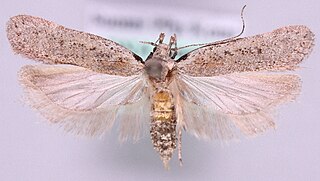
Gelechia is a genus of moths in the family Gelechiidae. The type species is Gelechia rhombella.
Ophiolechia is a genus of moths in the family Gelechiidae.

Thiotricha is a genus of moths in the family Gelechiidae, subfamily Thiotrichinae.
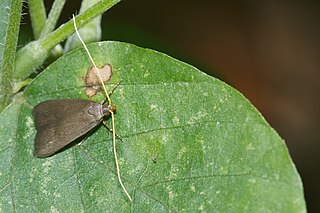
The Lecithocerinae are a subfamily of small moths in the family Lecithoceridae. They are found worldwide, but most species occur in South Asia. The subfamily is characterized by the male genitalia with a bridge-like structure connecting the tegumen and the valva, and the uncus almost always is vestigial with two lobes at the dorsal base, only exceptionally united into a broad plate, but never as a thorn or spine.

Bradina is a genus of moths of the family Crambidae.

Ophiomorpha is an ichnotaxon, usually interpreted as a burrow of an organism living in the near-shore environment. The burrow lining is more or less smooth on the inside, and densely to strongly mammalated or nodose on the outside, due to the packing of fecal pellets for support of the burrow. Branching is irregular but Y-shaped where present. It is often considered part of the Skolithos ichnofacies, where it has occurred since the early Permian, though it has also occurred in deep water settings since the Late Jurassic, such as well-oxygenated turbidites.
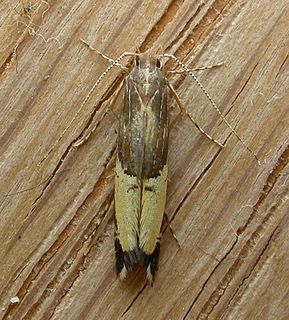
Labdia is a genus of moths in the family Cosmopterigidae.

The Oecophorinae are the nominate subfamily of moths in the concealer moth family (Oecophoridae). They are part of the insufficiently studied superfamily Gelechioidea, and like their relatives, the circumscription of this taxon is disputed.

Acrocercops is a genus of moths in the family Gracillariidae.

Xyloryctidae is a family of moths contained within the superfamily Gelechioidea described by Edward Meyrick in 1890. Most genera are found in the Indo-Australian region. While many of these moths are tiny, some members of the family grow to a wingspan of up to 66 mm, making them giants among the micromoths.
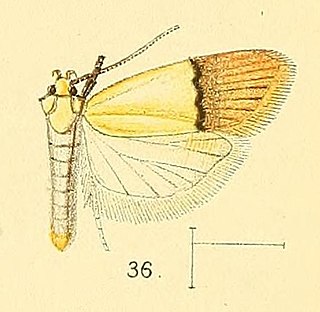
Odites is a genus of moths in the family Depressariidae. Most species of this genus are found in Asia and in Africa.
Cryptolechia is a genus of moths in the family Depressariidae.
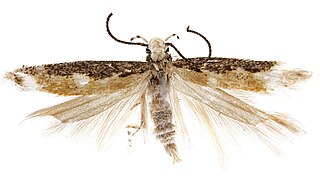
Gelechiinae is a subfamily of moths in the family Gelechiidae. It was described by Henry Tibbats Stainton in 1854.

Anacampsinae is a subfamily of moths in the family Gelechiidae.
Apatetrinae is a subfamily of moths in the family Gelechiidae. The subfamily was described by Edward Meyrick in 1947.
Ophiolechia pertinens is a moth in the family Gelechiidae. It was described by Edward Meyrick in 1931. It is found in Paraguay.
The Torodorinae are a subfamily of small moths in the family Lecithoceridae.














